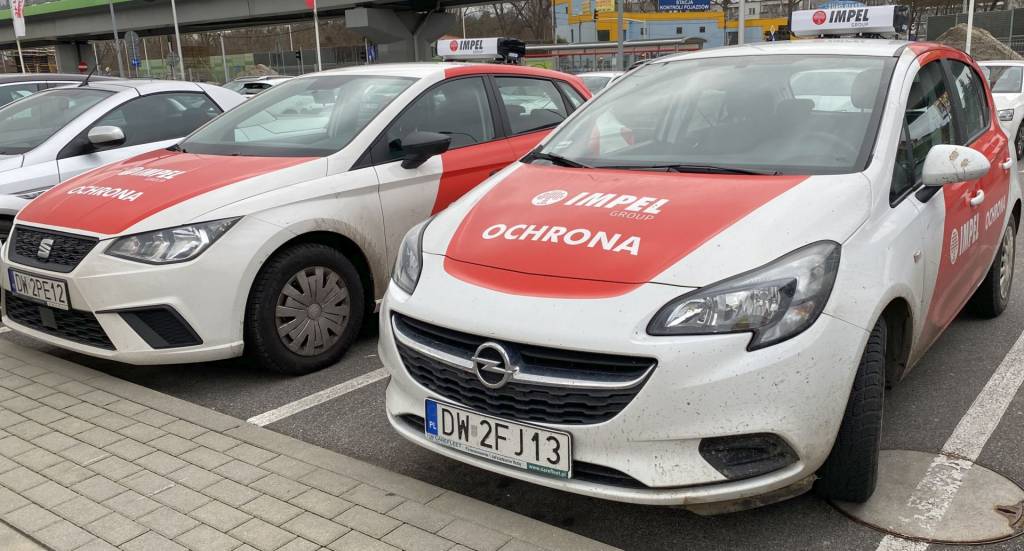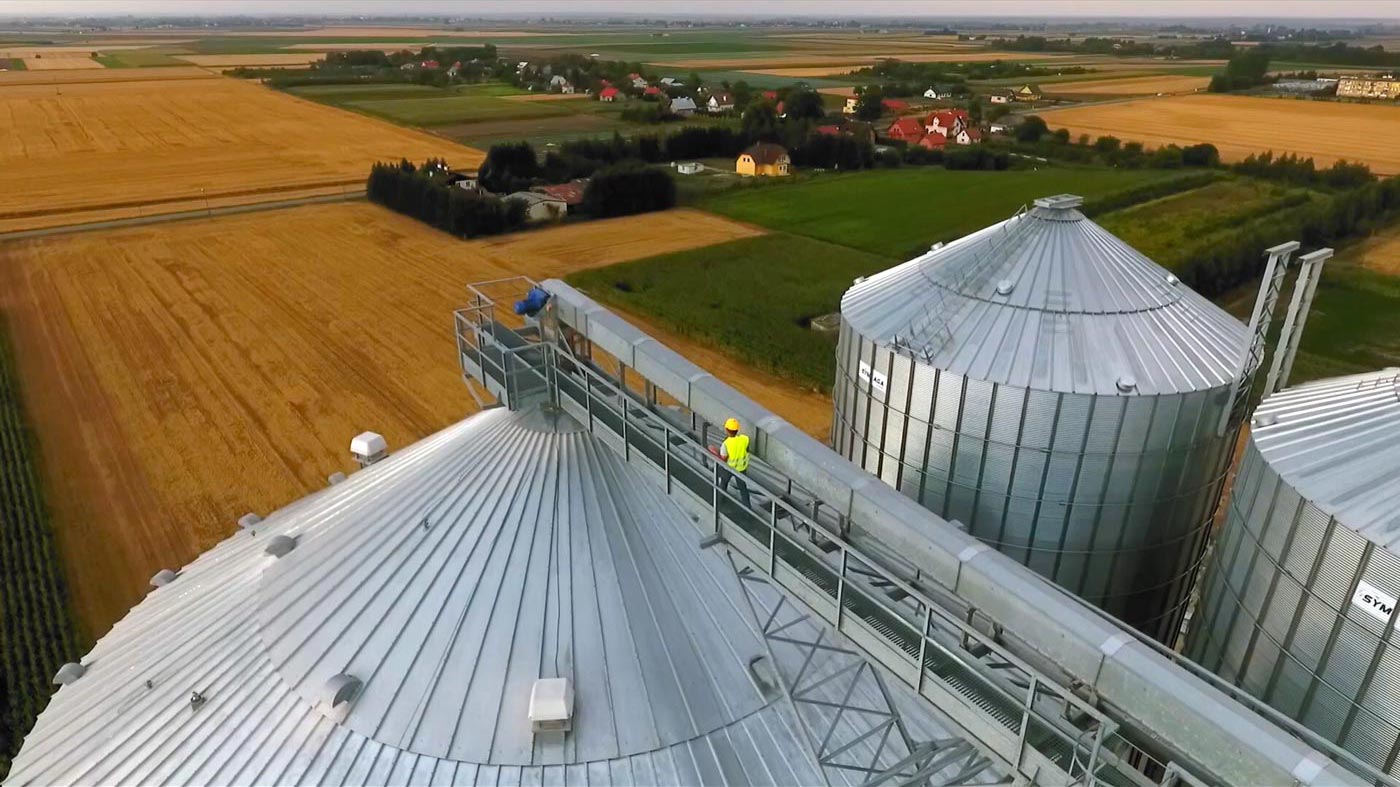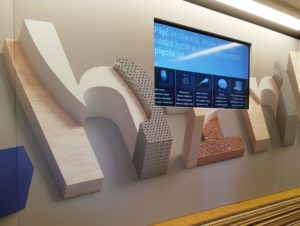
Time to reap
How business intelligence systems improve data analysis in agriculture? PROCAM Polska – a case study
Are advanced business insights unique to the financial sector? By no means! Business intelligence works in many down-to-earth sectors of the economy. For example in agriculture, like in the case of PROCAM, specialising in supporting agricultural production.
PROCAM was established 15 years ago by Zbigniew Tomasik and since day one their main areas of focus have been seed distribution, plant protection products and agronomic consulting.
The beginnings were difficult. The agrarian culture of Polish farms was low, and most of them were small and low-efficient. After Poland’s accession to the European Union, farmers became agricultural entrepreneurs, and many rural residents disposed of farms where production was not profitable. Rapidly occurring changes in the Polish countryside and the ensuing land consolidation paved the way towards modern agriculture.
With the accession to the EU, Procam gained a new Partner from the United Kingdom, which acquired 80% of shares. Today, in terms of turnover, Procam is among the top five Polish agrarian companies, and their revenues exceed PLN 1 billion. Thanks to modern management methods, the Polish branch outgrew its main British shareholder in terms of turnover.
Procam is also a leader in releasing product innovations. Together with the Polish company BioGen, they offer low-chem products and focus on innovative sowing and cultivation processes.
Growing plants is a challenge!
Since their early days, Procam have had the ambition to create a comprehensive consulting offer and to provide everything needed for year-round agricultural production – from seeds, through fertilisers, to crop protection. The company offers products that guarantee the best return on investment in many categories depending on crops and potential pests.
The company’s main clients are farms over 100 hectares in the case of traditional sown crops, and 15 ha in the case of fruit growing. The end recipients are targeted through agronomists acting as consultants. They reach out to farmers who are offered the entire crop technology, not just individual products.
At the time of purchase, an obligation arises towards Procam, which is secured by the agricultural produce. The crops are then delivered to large food manufacturers. Settlement takes place at the time of harvesting, regardless of whether Procam or another recipient is the buyer.
A diverse offer across different product groups, depending on the region, season and what is sown, coupled with an enormous group of recipients is a huge challenge for the company’s management. Even more so given that agricultural producers are credited by the company, while suppliers charge rebates on the completed orders.
Currently, Procam employs 350 people, including 130 agronomists, who often run their own farms and serve over 20,000 customers.
Data streams from suppliers, customers and employees provide a huge amount of information. However, this is knowledge that cannot be taken advantage of using a ‘calculator’, like even the most elaborate spreadsheet.
Where does business intelligence come from?
From the very beginning, the company’s management was aware that their success depends on premium products, comprehensive services for farmers and efficient management. Rapid growth brought about the first problems. A diverse offer, different methods of settling accounts with producers and suppliers… all this meant that the huge amounts of data were being received by the company from various sources. This data was not integrated with any internal system. This meant that the process of creating reports in a spreadsheet was time consuming and prone to errors.
Also, managing the handling of goods in the warehouse was difficult, and at times products rotating too slowly extended order processing time.
The company started looking for software that would be able to ‘squeeze’ more out of the data at their fingertips. The controlling department, created 8 years ago, needed software that would connect different sources and allow to generate reports quickly.
Examined were solutions of two companies, SAS and Qlik, and it was the latter that stood out with its quickly implementable basic application.
The first application in QlikView concerned sales, without any connection to the cost part. The application was created by employees of the business intelligence department. It took quite a long time, because the people involved in the process had to familiarise themselves with both the company and the software. The second stage involved developing a mark-up application, which was not easy, as the mark-up includes a retrospective bonus based on the history of purchases made with suppliers.
The absence of links between the various data sources caused errors, and the data sourcing process was also tedious.
In 2019, a decision was made to use the newer version, Qlik Sense, which provides enhanced data analysis and visibility, and ensures the support of external consultants to the controlling team.
Almost from the very beginning, Procam has been supported by experts of Hogart Business Intelligence, one of Qlik’s main partners in Poland. Hogart BI supports companies that do not have the right resources or whose teams are not large enough. A mixed model usually works best: the internal team is supported by the partner’s consultants. External support expedites the entire process, helping at every stage, from tool design, through implementation, to training.
Qlik Sense streamlined the creation of analyses, and Hogart BI consultants not only accelerated the development of applications, but also helped identify problems and troubleshoot them. Receivables and warehouse solutions were created very quickly, along with a cost application. What is also important is that Qlik Sense is more user-friendly and works on tablets used by agronomists.
Joanna Stachowska, Procam’s CFO, recalls that “we dreamt of generating reports by regions and individual people within product groups. Thanks to Qlik Sense, we accomplished more in one year than in the previous five. Our sales and margin application in QlikView became somewhat outdated along the way, so we decided to transfer them over to Qlik Sense.”
Currently, the company employs three people in the business intelligence department, one person from the receivables department supports them in operating the system, while the end users are a dozen or so category and regional directors, and 30 department managers. Reports on sales and receivables are e-mailed to the directors using the NPrinting tool. These analyses are intended to be distributed directly to the agronomists. Everything works in real time, which is an extremely important advantage of Qlik.
It makes sense
Qlik is largely a self-service solution where users who have the right knowledge and skills operate the application on their own. The company’s team is involved in the development of the application, yet in view of the time needed to complete a project, they require external support. Hogart Business Intelligence guarantees success and significantly speeds up the implementation process.
Traditional work using a spreadsheet is slow: it requires distribution on a shared drive, and the file is downloaded by each person individually, which means that the changes that are introduced may be overlooked by others.
Qlik removes the disadvantages of the spreadsheet, which:
- does not come with management features,
- has as many versions, as there are people editing it,
- generates a lot of errors: a single piece of data that is missing or an unselected cell results in a general error.
This means that all versions need to be consolidated and only then can the data be analysed.
In Qlik, all versions remain in one location, they are combined, recalculated, and everyone uses the same updated data, e.g. exchange rates. Qlik is also quickly deployable, easy to use, secure and scalable.
Users have access to uniform, consistent, predictable and comparable data that does not allow unauthorized tampering or access, and copying or transmission is impossible. This creates a coherent image of the entire company.
What is extremely important, analyses allow you to check in real time what obligations a particular customer has or what the average receivable balance is, broken down by buyers, region and products. Additionally, thanks to NPrinting, which offers an automated process of distributing reports and analyses in the form of a PDF, Power Point, Excel file, the documents can also be provided to people outside the company, e.g. in the form of annual reports or similar documents.
- Thanks to Business Intelligence, Procam was able to connect suppliers, sales, warehouse, the full breadth of receivables as well as customer evaluations and rating, in combination with data from the CRM system.
- The company has access to comprehensive information about each of the customers: sales volume, margin, assigned account manager, balance of receivables, payment date and delays, as well as the assigned employee in charge of sales, debt collection or buying.
Soon, crop data enriched with geolocation information will allow to visualise performance on the map. The application allows to determine what bonuses are due to the company for the previous and planned purchases. Procam can calculate it individually and knows when they pay, how much and how this affects the purchase price.
A user’s perspective: is it worth it?
Calculating the return on investment is not easy, but it is possible, and the benefits are obvious.
It saves time. Before the era of BI systems, 80% of the time was devoted to preparing reports and 20% to analysing them. After the introduction of BI, the proportions reversed. Most of the time can actually be spent on analysing the results. Greater responsiveness and value of information offers a key advantage. Without BI tools, reports and the analyses they make possible would have a much lower frequency, as creating them requires much more time. In the case of Qlik, the report is available on demand, no matter how many variables the user chooses.
The user can customise the measures and dimensions, and thus can access any report of the required level of detail. Traditional, spreadsheet-based methods of analysing data require creating a new report in each case, a problem that is absent in BI.
Ongoing management of inventory levels
According to Joanna Stachowska, “thanks to Qlik, the company can respond much quicker to changes in the market situation, since all products are different and are traded at specific times of the year. That is why current and accurate information is so important. If you have visibility into your non-moving stock items, you can avoid unnecessary warehousing. When you know how many products have been paid for, you need to sell them. Data is not historical and is communicated in real time. This allows us to operate quicker than the competition.
Essential tools for agronomists
Information that is just one click away offers insights that can serve to motivate employees. Agronomists no longer learn about the results of their work half a year later, when the season is over and they have nothing to do. Thanks to the reports, the agronomists know every day how much is left to meet the target and whether they are already ahead.
Essential tools for managers
As Joanna Stachowska emphasizes, “Qlik is an excellent management application. I can no longer imagine meeting with 30 managers to discuss the goods in the individual warehouses, or receivables from particular customers. They are the managers, which means they need current information. The company is growing so quickly because people have access to information and are able to make informed decisions on their own. This is also beneficial for healthy competition that drives better results. Furthermore, Qlik removes disproportionately high earnings, creating a level playing field for everyone.












